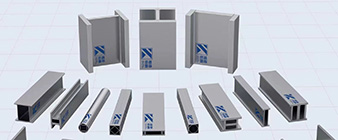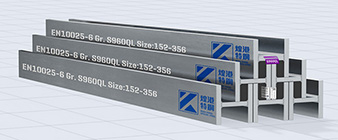The following is a comparison of performance characteristics between UNS N08904 (904L) stainless steel and 1.4539 (317LN) stainless steel:
UNS N08904 (904L) has excellent corrosion resistance compared to 1.4539 (317LN) stainless steel.
904L contains higher contents of chromium (19-23%), nickel (23-27%) and molybdenum (4-5%), which provides excellent resistance to pitting, crevice and stress corrosion in various corrosive environments. Including seawater, chloride and various acids.
1.4539 (317LN) also has good corrosion resistance, but not as well as 904L, especially under more severe corrosion conditions.
UNS N08904 (904L) has better resistance to a wider range of chemicals than 1.4539 (317LN), including strong oxidizing acids, reducing acids and organic compounds.
The higher nickel and molybdenum content in 904L helps enhance its chemical resistance, making it a first choice for equipment and parts in the chemical processing industry.
UNS N08904 (904L) and 1.4539 (317LN) stainless steel maintain their mechanical properties and corrosion resistance over a wide temperature range from low to high temperatures.
However, 904L is generally slightly more thermally stable than 317LN, especially at higher temperatures up to 600°C (1112°F).
UNS N08904 (904L) and 1.4539 (317LN) have similar mechanical properties, both possessing good strength, ductility and toughness.
Typical tensile strengths for 904L range from 550 to 750 MPa, while those for 317LN range from 520 to 680 MPa.
Yield strengths are typically 220 to 450 MPa for 904L and 240 to 400 MPa for 317LN.
Both UNS N08904 (904L) and 1.4539 (317LN) stainless steel can be easily welded using a variety of techniques, including TIG, MIG and plasma arc welding.
The high ductility and formability of both alloys make them easy to fabricate, including bending, rolling and machining, to produce a variety of structural components and equipment.
UNS N08904 (904L) and 1.4539 (317LN) stainless steel have a smooth, non-porous surface which, coupled with its excellent corrosion resistance, makes it easy to clean and maintain a high level of hygiene.
This property is particularly important in food processing, pharmaceuticals and other industries where cleanliness and hygiene are critical.
In summary, while UNS N08904 (904L) and 1.4539 (317LN) stainless steel are both high-performance alloys, 904L generally offers superior corrosion and chemical resistance, making it the first choice for applications in harsh, corrosive environments. For example in the water treatment and chemical processing industries.
-
 2024-9-15 High-Performance Weathering Steel Structures: A Comprehensive Overview
2024-9-15 High-Performance Weathering Steel Structures: A Comprehensive Overview -
 2024-9-24 310S stainless steel hollow structural Sections
2024-9-24 310S stainless steel hollow structural Sections -
 2024-9-19 UNS S32570 stainless steel structural profile
2024-9-19 UNS S32570 stainless steel structural profile -
 2024-9-19 Alloy 718/2.4668/UNS N07718 in offshore energy applications
2024-9-19 Alloy 718/2.4668/UNS N07718 in offshore energy applications -
 2024-9-16 S32205 stainless steel of Introduction to the performance
2024-9-16 S32205 stainless steel of Introduction to the performance -
 2024-7-16 Laser welding of advanced high-strength steels (AHSS)
2024-7-16 Laser welding of advanced high-strength steels (AHSS) -
 2024-9-29 Alloy 602 CA / 2.4633/N06025 Nickel-based alloy structural profiles
2024-9-29 Alloy 602 CA / 2.4633/N06025 Nickel-based alloy structural profiles



